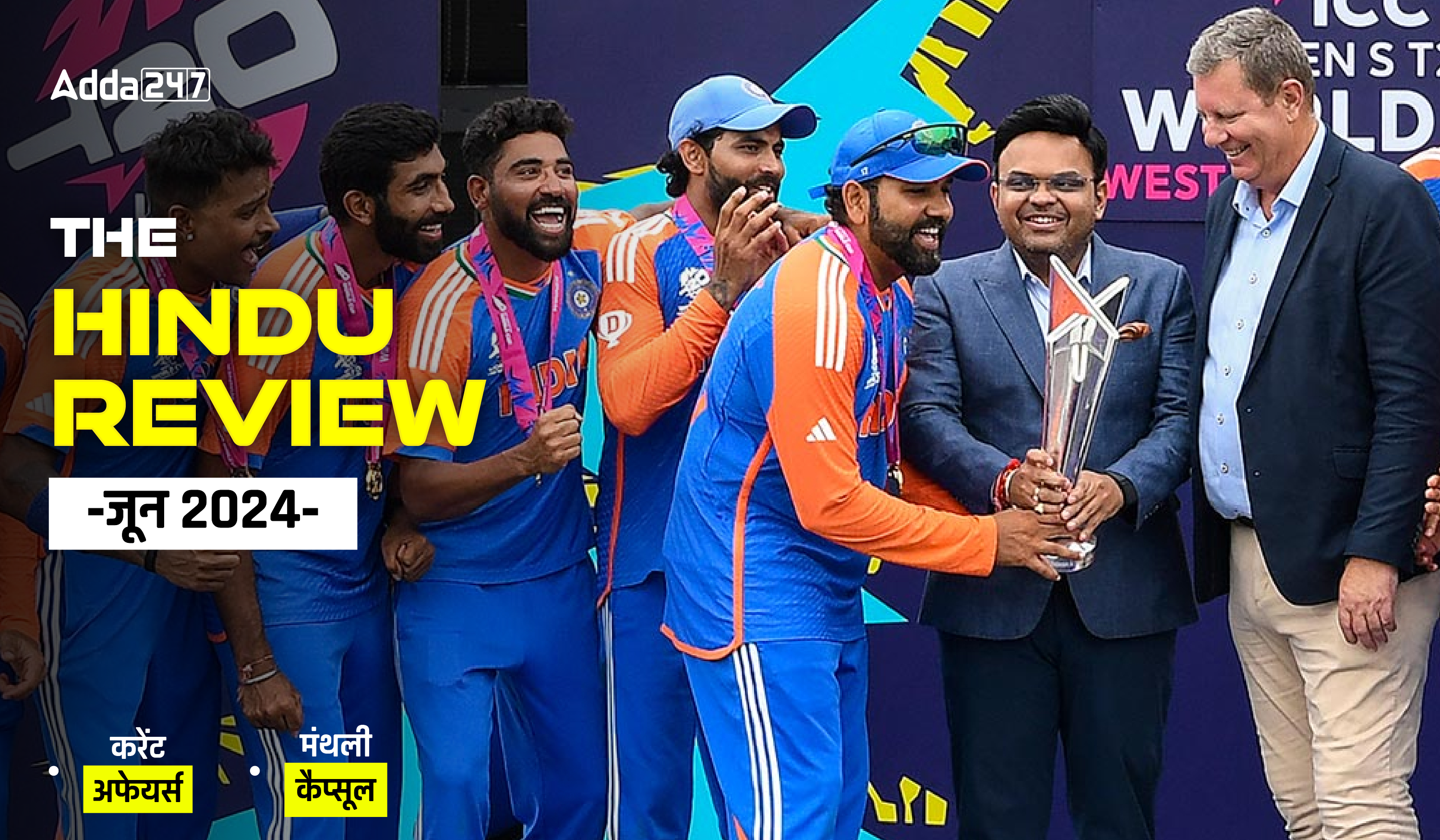
Q1. निजी और राज्य उद्यम को मिलाकर एक आर्थिक प्रणाली को _____ कहा जाता है
(a) बाजार अर्थव्यवस्था
(b) केंद्र की योजना बनाई अर्थव्यवस्था
(c) निजी अर्थव्यवस्था
(d) मिश्रित अर्थव्यवस्था
(e) इनमें से कोई नहीं
Q2. भारत में तीसरी पंचवर्षीय योजना का मुख्य उद्देश्य क्या था?
(a) ग्रामीण विकास
(b) कृषि
(c) वित्तीय समावेशन
(d) आर्थिक सुधार
(e) इनमें से कोई नहीं
Q3. जब उत्पाद का केवल एक खरीदार और एक विक्रेता होता है, तो इसे _____ स्थिति कहा जाता है।
(a) सार्वजनिक एकाधिकार
(b) द्विपक्षीय एकाधिकार
(c) फ्रेंचाइजी एकाधिकार
(d) मोनोपोनी
(e) इनमें से कोई नहीं
Q4. निम्नलिखित में से कौन सा भुगतान संतुलन (बीओपी) के अंतर्गत खाता नहीं है?
(a) चालू खाता
(b) पूंजी खाता
(c) आधिकारिक रिजर्व खाता
(d) वित्तीय खाता
(e) इनमें से कोई नहीं
Q5. ‘सामान्य संतुलन सिद्धांत’ किसने दिया था?
(a) जे एम कीन्स
(b) लियोन वालरस
(c) डेविड रिकार्डो
(d) एडम स्मिथ
(e) इनमें से कोई नहीं
Q6. भारत में ग्रामीण क्षेत्र के लिए स्वीकृत औसत कैलोरी आवश्यकता क्या है?
(a)2100
(b)2200
(c) 2300
(d) 2400
(e) इनमें से कोई नहीं
Q7. भारतीय रिजर्व बैंक किस दर पर वाणिज्यिक बैंकों से पैसा उधार लेता है?
(a) बैंक दर
(b) रेपो दर
(c) रिवर्स रेपो दर
(d) वैधानिक तरलता दर
(e) इनमें से कोई नहीं
Q8. आपूर्ति वक्र के अनुदिश गति को ________ के रूप में जाना जाता है।
(a) आपूर्ति का संकुचन
(b) आपूर्ति का विस्तार
(c) आपूर्ति में वृद्धि
(d) आपूर्ति का विस्तार और संकुचन
(e) इनमें से कोई नहीं
Q9. विदेशी संदर्भ मुद्रा के सापेक्ष मुद्रा के मूल्य में कमी को _________ कहा जाता है।
(a) अवमूल्यन
(b) पुनर्मूल्यांकन
(c) डाउन वैल्यूएशन
(d) नकारात्मक मूल्यांकन
(e) इनमें से कोई नहीं
Q10. भारत में राजकोषीय नीति किसके द्वारा तैयार की जाती है –
(a) भारतीय रिजर्व बैंक
(b) योजना आयोग
(c) वित्त मंत्रालय
(d) सेबी
(e) इनमें से कोई नहीं
SOLUTIONS:
S1.Ans.(d)
Sol. In a mixed economy, private and public sectors are involved in economy as two side of one coin. The government directs economic activity in some socially important areas of the economy, the rest being left to the price mechanism to operate.
S2.Ans.(b)
Sol.The 3rd five year plan laid considerable stress on the agricultural sector. However, with the short lived Sino Indian War of 1962 India diverted its attention to the safety of the country. Again, during the period 1965 to 1966, owing to Green Revolution, once again agriculture attracted attention.
S3. Ans.(b)
Sol. A bilateral monopoly is a market structure consisting of both a monopoly (a single seller) and a monopsony (a single buyer).
S4.Ans.(c)
Sol.Official Reserves Account is not an account under Balance of Payments(BOP).
S5. Ans.(b)
Sol. French economist Leon Walras in his pioneering work Elements of Pure Economics in 1874 gave General Equilibrium theory. It attempts to explain the behavior of supply, demand, and prices in a whole economy with several or many interacting markets, by seeking to prove that the interaction of demand and supply will result in an overall general equilibrium.
S6. Ans.(d)
Sol.The nutritional requirement recommends a national norm of 2,400 kilo calories a day for rural areas and 2,100 calories a day for urban areas, the difference being attributed to the lower rate of physical activity in urban areas.
S7. Ans.(c)
Sol. Reverse Repo rate is the rate at which RBI borrows money from the commercial banks.It is a monetary policy instrument which can be used to control the money supply in the country.
S8. Ans.(d)
Sol. A movement along the supply curve will occur when the price of the good changes and the quantity supplied changes in accordance to the original supply relationship. In other words, a movement alongs the supply curve is known as Expansion and Contraction of supply.
S9. Ans.(a)
Sol. Devaluation is a deliberate downward adjustment to the value of a country’s currency relative to another currency.
S10. Ans.(c)
Sol.Fiscal policy in India is formulated by Finance Ministry.


